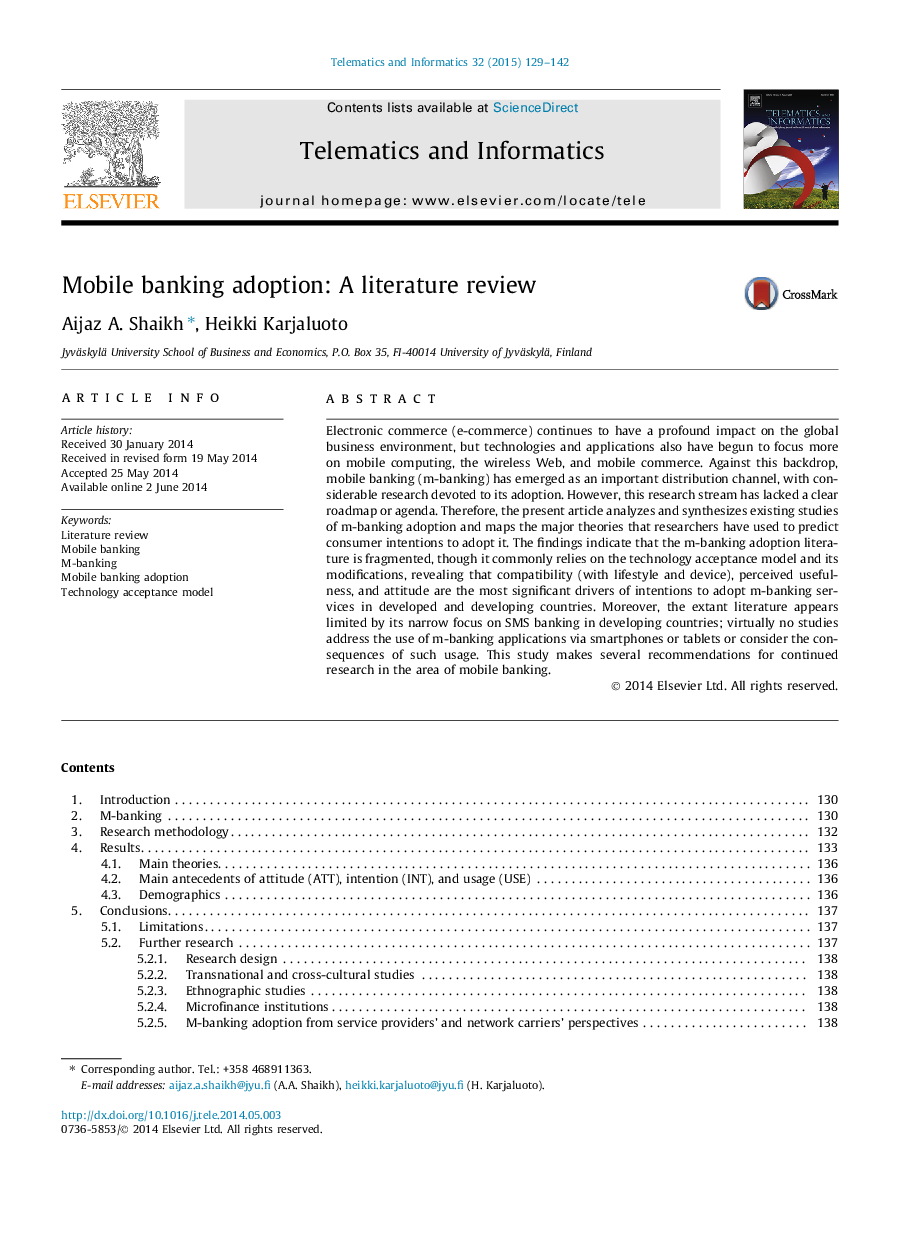| Article ID | Journal | Published Year | Pages | File Type |
|---|---|---|---|---|
| 464434 | Telematics and Informatics | 2015 | 14 Pages |
•Literature review analyses research on mobile banking adoption.•Analysis indicates that m-banking research lacks a clear roadmap.•Literature focuses on SMS banking in developing countries.•M-banking adoption literature mostly utilizes technology acceptance model.•Compatibility (with lifestyle and device), perceived usefulness, and attitude are the most significant drivers of intention.
Electronic commerce (e-commerce) continues to have a profound impact on the global business environment, but technologies and applications also have begun to focus more on mobile computing, the wireless Web, and mobile commerce. Against this backdrop, mobile banking (m-banking) has emerged as an important distribution channel, with considerable research devoted to its adoption. However, this research stream has lacked a clear roadmap or agenda. Therefore, the present article analyzes and synthesizes existing studies of m-banking adoption and maps the major theories that researchers have used to predict consumer intentions to adopt it. The findings indicate that the m-banking adoption literature is fragmented, though it commonly relies on the technology acceptance model and its modifications, revealing that compatibility (with lifestyle and device), perceived usefulness, and attitude are the most significant drivers of intentions to adopt m-banking services in developed and developing countries. Moreover, the extant literature appears limited by its narrow focus on SMS banking in developing countries; virtually no studies address the use of m-banking applications via smartphones or tablets or consider the consequences of such usage. This study makes several recommendations for continued research in the area of mobile banking.
